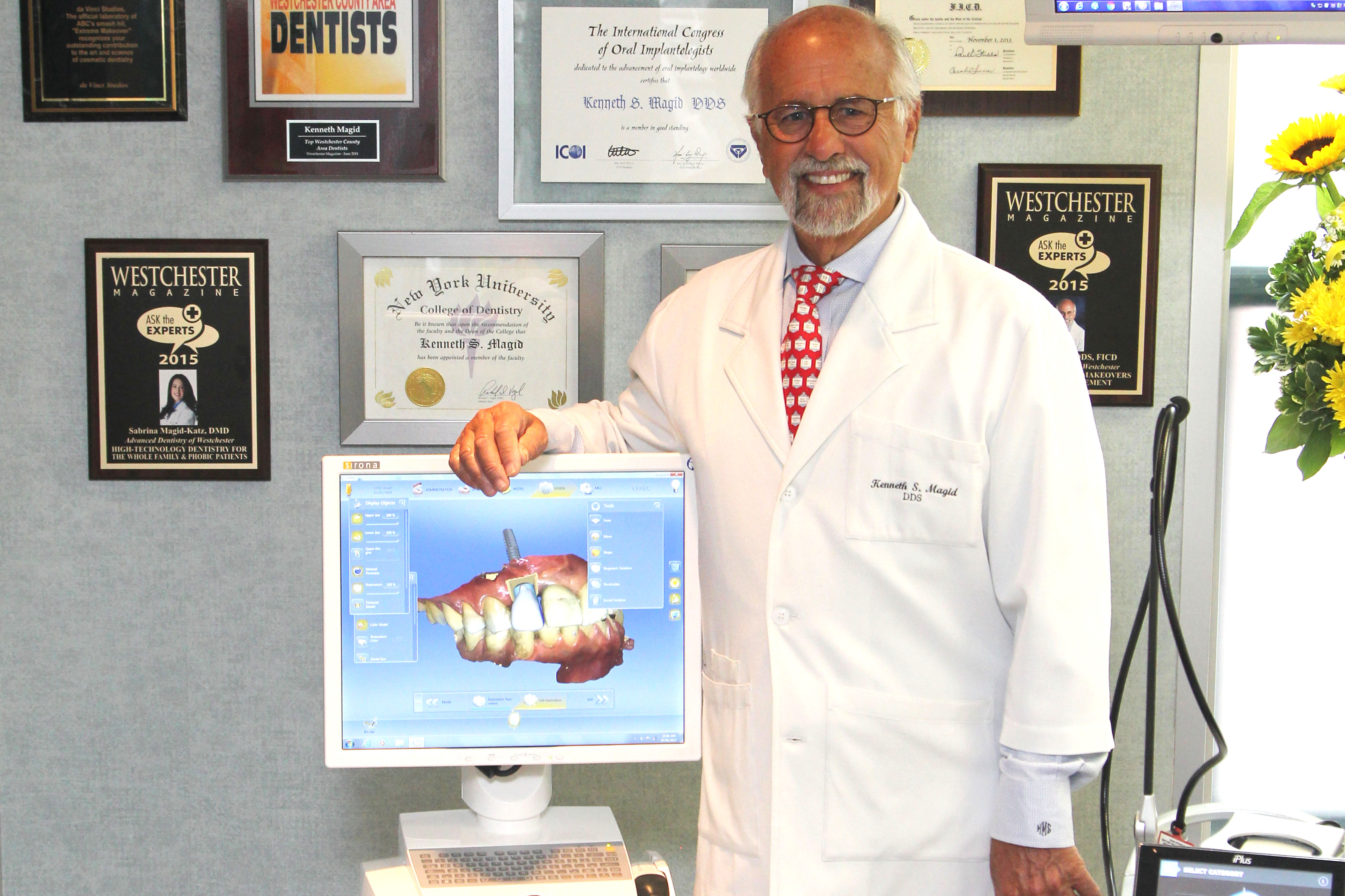CAD/CAM vs. Porcelain Veneers
Which material is right for a smile makeover?
The Process For CAD/CAM Dentistry
The decision between CAD/CAM and feldspathic porcelain veneers is primarily a decision about what material to use. Because feldspathic porcelain veneers are built with tiny amounts of powder, they are capable of providing the most beautiful and lifelike results with varied colors throughout a single tooth. They are also most capable of opaquing out problematic underlying color of the existing teeth such as black or deep brown discoloration.
The downside of feldspathic porcelain is that it requires a very skilled and experienced ceramist, which can dramatically increase the cost of these veneers. In addition, feldspathic veneers are weaker and more prone to chipping or cracking than other materials. The patients bite and developing proper occlusion and function must be taken into consideration when choosing this material.
When discussing CAD/CAM veneers, the first consideration is the choice of materials. Although this technique can be used to mill feldspathic material, it is most often used to mill ceramics such as lucite reinforced porcelain or lithium disilicate or similar materials. The advantage of these materials is their strength, which can be more than five times stronger than feldspathic porcelain. The disadvantage is these veneers are milled out of a single block of material, which then limits the variation in achievable color.
The single color of the block can be modified by surface colorization, which often does not last, or by altering the milled composite and then hand layering porcelain over the surface or at the edge to create better esthetics. These materials do not have the opacity to block out severely discolored tooth structure. It is also very difficult to achieve the thinness of feldspathic veneers with CAD/CAM, which can make them less accurate and can appear bulkier and less esthetic.
Another advantage of CAD/CAM veneers is cost. Whether a Westchester, NY dentist creates the veneers in-house or uses a laboratory for these restorations, it is important to note that they are far less expensive to produce than using a skilled ceramist to do feldspathic porcelain.
A hybrid version technique using the stronger materials can be done by skilled laboratory technicians who wax the new veneers and then heat and press the materials in special devices. Finally, these pressed veneers are finished by hand layering porcelain. The result is veneers that can be as accurate and thin as feldspathic veneers with greater strength.
Which material is right for my veneers?
At Advanced Dentistry of Westchester, we choose the material based upon knowledge of the physical properties and the demands of the particular case, which is why substantial training and education is so important. We mostly use feldspathic veneers, but when required will use pressed ceramic veneers. Although our office has CAD/CAM capability, we rarely use that technology for veneers.
Why we rarely use CAD/CAM veneers & what we use instead
The original material for “porcelain” veneers has always been feldspathic porcelain. This material is used in a powder state which is hand-built by talented dental ceramists to create beautiful veneers. Because feldspathic veneers are the only material that are built by hand, they are uniquely capable of the subtle variations in color that make teeth look realistic.
In addition, only feldspatic veneers are capable of blocking out very dark or stained tooth structure and still look realistic. It takes many years of experience for a ceramist to create the beautiful effects that feldspathic porcelain can provide and this is still the gold standard used for the vast majority of our veneers.
We do use materials such as eMax in cases of patients that have habits such as tooth grinding and nail biting or patients with very difficult bites since they can be over five times stronger than feldspathic porcelain. These newer materials make veneers possible for those patients.















